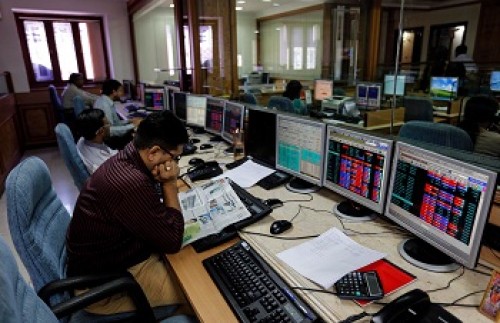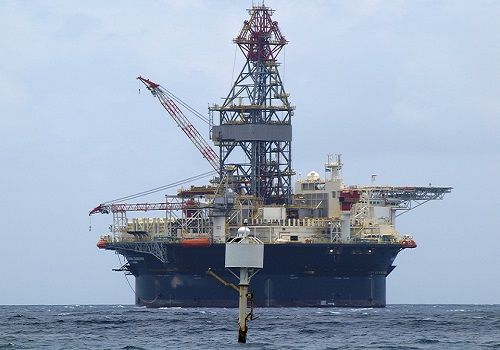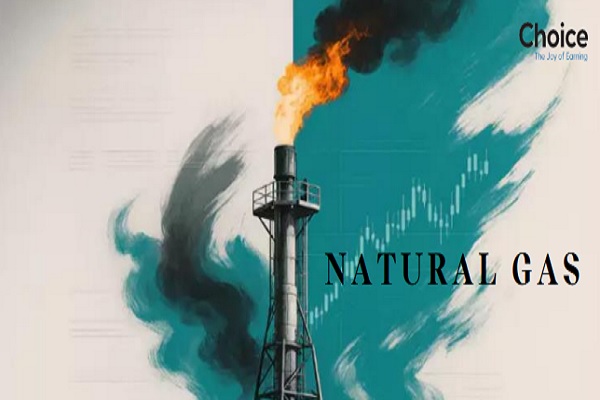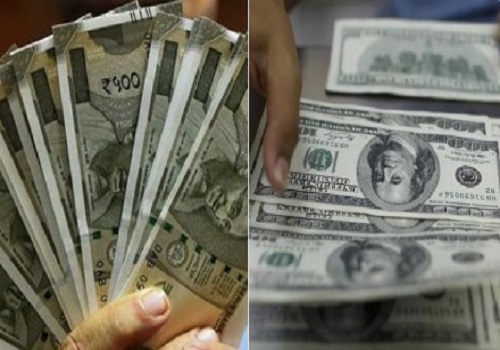Jeera trading range for the day is 23750-24950 - Kedia Advisory

Gold
Gold prices exhibited a marginal decline of -0.08% yesterday, settling at 65542, driven by concerns surrounding the Federal Reserve's stance on interest rate cuts. Data revealing a higher-than-expected rise in inflation heightened speculation that the Fed might delay rate cuts beyond June, exerting downward pressure on gold. The unexpected uptick in U.S. consumer prices, along with persistent stickiness in producer prices, intensified pressure on the Fed to maintain interest rates at higher levels for a longer duration, which negatively impacted gold prices. The physical gold demand in Asia dwindled as prices soared, deterring fresh purchases from consumers. Consequently, dealers resorted to offering significant discounts, reminiscent of levels seen a year earlier in India and lower premiums in China. Notably, gold premiums in China slipped to $15-$25 per ounce, the lowest since July, while Indian dealers offered discounts of about $36 per ounce, the highest since March 2023. From a technical standpoint, the market observed long liquidation, evidenced by an -8.72% drop in open interest, settling at 13,827. Despite a significant decline of -53 rupees in prices, gold finds support at 65405, with potential downside towards 65265. Conversely, resistance is expected at 65790, with a breakthrough possibly leading to a test of 66035 levels. Traders remain focused on the possibility of interest rate cuts in June, with the market pricing in a 59% chance, down from 72% before the release of CPI data.
Trading Ideas:
* Gold trading range for the day is 65265-66035.
* Gold steadied over concerns that Fed might defer interest rate cuts beyond June.
* U.S. consumer prices increased above expectations in February.
* Physical gold demand in Asia dwindled on the back of sky-high prices as consumers abstained from making fresh purchases.
Silver
Silver prices rose by 0.56% yesterday, closing at 75650, driven by heightened safe-haven demand amid escalating geopolitical tensions and concerns over inflation risks. Investors turned to silver as a refuge amidst uncertainties, with high prices and inflation becoming significant political issues ahead of U.S. elections, complicating the Federal Reserve's policy decisions aimed at managing economic stability. However, economic indicators presented a mixed picture. U.S. business inventories remained unchanged in January, with increases in retail stocks offset by declines in manufacturing and wholesale inventories. Manufacturing activity in the New York region sharply declined in March, as reported by the New York Federal Reserve, indicating a significant contraction compared to February's reading. On the inflation front, U.S. import prices saw marginal increases in February, driven by a surge in petroleum product costs, though partially offset by modest gains elsewhere. This mixed data suggests ongoing challenges for the Federal Reserve in navigating inflation pressures. In India, silver imports by banks halted after private traders capitalized on lower duties by purchasing large volumes from the UAE. This disruption in the market could have implications for silver prices and supply dynamics. From a technical perspective, the silver market observed fresh buying interest, with open interest rising by 4.47%. Prices surged by 424 rupees, indicating strong momentum. Currently, silver finds support at 75290, with a potential downside test of 74925. On the upside, resistance is expected at 76035, with a breakthrough possibly leading to a test of 76415.
Trading Ideas:
* Silver trading range for the day is 74925-76415.
* Silver rose driven by safe haven demand amid increased war and inflation risks.
* Manufacturing activity in the New York region collapsed this month
* Indian banks halt silver imports as duty differential spurs private trade
Crude oil
Crude oil prices surged by 2.48% yesterday, settling at 6742, primarily driven by profit-taking following recent strong gains and bolstered by a forecast from the International Energy Agency indicating a potential drop in inventories this year. The near-term outlook for global oil and liquids production suggests growth, led by key players such as the U.S., Guyana, Canada, and Brazil, which are expected to offset voluntary production cuts by OPEC+. The U.S. Energy Information Administration (EIA) revised its forecast for domestic oil growth in 2024, anticipating an increase of 90,000 barrels per day (bpd) to 13.19 million bpd, surpassing its previous projection. However, global oil production growth forecasts were lowered due to OPEC+ production cuts. U.S. crude oil production is anticipated to further rise by 460,000 bpd to 13.65 million bpd in 2025, according to the EIA's Short-Term Energy Outlook (STEO). Amidst these dynamics, the U.S. is replenishing its Strategic Petroleum Reserve (SPR) after selling a record amount of oil in 2022. As part of this effort, the Department of Energy is soliciting bids for 3 million barrels of domestically-produced crude oil for the Bayou Choctaw site in Louisiana, slated for delivery in August and September. However, rising crude prices may temper the pace of replenishment. Technically, the market observed short-covering, with open interest remaining unchanged at 6,092 while prices surged by 163 rupees. Support for crude oil is seen at 6638, with potential downside towards 6534, while resistance is likely at 6806, with a possible upward movement to test 6870 levels.
Trading Ideas:
* Crudeoil trading range for the day is 6637-6787.
* Crude oil prices dropped largely due to profit taking after recent strong gains
* Non – OPEC+ to lead 2024 oil production growth, offsetting output cuts – EIA
* U.S. crude oil production will rise by 260,000 bpd to 13.19 million bpd this year, the EIA said
Natural gas
Natural gas prices experienced a significant decline of -3.49% yesterday, settling at 138.3, as forecasts for mild weather dampened demand for heating. The U.S. Energy Information Administration (EIA) reported a larger-than-expected withdrawal of 9 billion cubic feet (bcf) from storage, contrasting with a withdrawal of 65 bcf during the same period last year and a five-year average decrease of 87 bcf. Meteorologists anticipate warmer-than-normal weather across the Lower 48 states until March 18, followed by a shift to near- to colder-than-normal temperatures from March 19-26. This weather outlook, coupled with reduced drilling activities by energy firms such as EQT and Chesapeake Energy, contributed to downward pressure on natural gas prices. The U.S. EIA's Short-Term Energy Outlook forecasts a decline in natural gas production this year, while demand is expected to reach record highs. Despite low prices, domestic gas consumption is projected to increase from a record 89.09 bcfd in 2023 to 89.68 bcfd in 2024 before easing slightly to 89.21 bcfd in 2025 as prices rise. Additionally, financial firm LSEG expects gas demand in the Lower 48 states, including exports, to decrease from 110.7 bcfd this week to 110.4 bcfd next week. From a technical standpoint, the natural gas market witnessed fresh selling pressure, with open interest rising by 1.27%. Prices declined by -5 rupees, indicating a bearish sentiment. Currently, natural gas finds support at 134.6, with a potential test of 130.9 on the downside. Resistance is expected at 144.9, with a breakout possibly leading to a test of 151.5.
Trading Ideas:
* Naturalgas trading range for the day is 130.9-151.5.
* Natural gas demand drops due to mild weather forecasts.
* EIA reported a larger-than-expected 9bcf of gas out of storage in the week ending March 8.
* Meteorologists predict warmer than normal weather across the Lower 48 states through March 18
Copper
Copper prices surged by 1.34% yesterday, settling at 762.25, following a rally in London that saw prices reaching a 10-month peak. The bullish sentiment was fueled by news of a potential output cut in China, the world's top copper producer. Major Chinese copper smelters have agreed to reduce operation rates, adjust maintenance schedules, and delay new projects in a concerted effort to bolster prices. Tight supplies of copper concentrates and lower processing fees have prompted China's North Copper to consider scaling back output in the future. This agreement among Chinese copper smelters to decrease production comes amidst mounting losses in the country's copper industry in recent months. However, the situation is complexed by the imminent launch of new global copper smelters with a combined capacity exceeding 1.7 million tonnes per year. This expansion in global smelting capacity could pose challenges to price stability in the copper market. Furthermore, disruptions in copper mining operations and the expansion of smelting capacity worldwide have led to a shortage of copper ore. Consequently, China's leading copper smelters have opted to cut output at some of their loss-making facilities, adjust maintenance plans, and postpone new projects to address the supply-demand imbalance. From a technical perspective, the market observed short-covering, indicated by a 4.82% drop in open interest to settle at 3,886, alongside a price increase of 10.05 rupees. Copper is currently finding support at 755.5, with potential downside towards 748.7, while resistance is expected at 766.9, with a potential breakout leading to a test of 771.5 levels.
Trading Ideas:
* Copper trading range for the day is 748.7-771.5.
* Copper rose buoyed by a potential output cut in China.
* Major Chinese copper smelters have reached an agreement to lower operation rates.
* Copper inventories in warehouses monitored by the Shanghai Futures Exchange rose 19.7% from last Friday
Zinc
Zinc prices edged lower by -0.22% yesterday, closing at 222.65, driven by a notable increase in inventories in warehouses monitored by the Shanghai Futures Exchange, which surged by 10.0% from the previous week. The resumption of production at Glencore's Nordenham zinc smelter in Germany further added to the downward pressure on prices. The smelter had been on care and maintenance for over a year due to surging power prices following the Russia-Ukraine conflict in 2022. Despite the rise in inventories and concerns over slow consumption recovery, downside potential for zinc prices remains limited. Supply concerns persist as the Seokpo smelter in South Korea has reduced its output by a fifth, potentially narrowing the market's surplus or even leading to a deficit. Additionally, elevated inventories at LME warehouses, exceeding 275,000 tons, have contributed to market sentiment. On the global scale, data from the International Lead and Zinc Study Group (ILZSG) showed that the zinc market deficit increased to 62,600 metric tons in December 2023, compared to a deficit of 53,500 tons in November. However, for the full year 2023, there was a surplus of 204,000 tons, contrasting with a deficit of 73,000 tons in 2022. From a technical perspective, the zinc market witnessed long liquidation, with a significant drop in open interest by -5.13%. Despite this, prices decreased by only -0.5 rupees, suggesting some resilience. Currently, zinc finds support at 221.1, with a potential test of 219.4 on the downside. Resistance is expected at 224.8, with a breakout possibly leading to a test of 226.8.
Trading Ideas:
* Zinc trading range for the day is 219.4-226.8.
* Zinc dropped after inventories in SHFE warehouses rose 10.0% from last Friday.
* Glencore's Nordenham zinc smelter starts ramping up output.
* Continuous inflow of imported zinc ingots may replenish part of the supply
Aluminium
Aluminium prices edged up by 0.44% yesterday, closing at 204.6, driven by renewed evidence of economic support measures in China aimed at stimulating demand. Despite concerns over growing inventory levels in China, there's a suggestion that this could be a seasonal pattern as the country prepares for increased consumption in the second quarter of the year. Notably, aluminium inventory has surged by 85% since the beginning of the year in warehouses monitored by the Shanghai Futures Exchange, while stocks in LME's registered warehouses saw a more modest increase of 2%. China, a major player in aluminium production, set a record in 2023, limiting potential upside for aluminium prices. The upcoming release of China's bank lending data, expected to show a sharp pullback in February from a record high in January, could offer insights into future metals consumption, particularly through the total social financing numbers. In December last year, global primary aluminium production stood at 5.9719 million tons, with consumption at 5.8364 million tons, resulting in a supply surplus of 135,500 tons. In January, global primary aluminium production slightly decreased by 0.05% compared to the previous month but rose by 2.4% from the same month a year ago, according to IAI statistics. From a technical standpoint, the market observed short-covering, with a notable 11.96% drop in open interest, settling at 3,326, while prices rose by 0.9 rupees. Aluminium is currently finding support at 204, with potential downside towards 203.2, while resistance is expected at 205.5, with a potential breakout leading to a test of 206.2 levels.
Trading Ideas:
* Aluminium trading range for the day is 203.2-206.2.
* Aluminium gains on renewed evidence that economic support measures from China.
* Aluminium inventories in warehouses monitored by the Shanghai Futures Exchange rose 12.0% from last Friday
* Global primary aluminum production totaled 6.039 million tons in January, slightly falling by 0.05%
Cotton candy
Cotton candy prices experienced a decline of -0.81% yesterday, settling at 61480, primarily driven by increased crop production forecasts by the Cotton Corporation of India (CCPC) for the current season. The upward revision in crop production expectations, coupled with lower demand from mills, exerted downward pressure on ICE prices for cotton. Additionally, Cotton Australia raised its production estimate for the year, further adding to supply expectations. In the U.S., cotton production forecasts for the current season were lowered based on recent reports, leading to reduced ending stocks projections. However, global cotton supply and demand estimates for 2023/24 showed higher production, consumption, and trade, but lower ending stocks. Despite lower stocks, the Southern India Mills' Association (SIMA) cautioned against panic buying, noting recent price hikes in the domestic market. Increased capacity utilization at mills and rising export contracts indicate strong demand, although concerns over domestic prices nearing international levels may impact export demand in the future. Technically, the cotton candy market observed long liquidation, with open interest remaining unchanged. Despite this, prices declined by -500 rupees. Currently, cotton candy finds support at 61200, with a potential downside test of 60910. Resistance is expected at 61900, with a breakout possibly leading to a test of 62310.
Trading Ideas:
* Cottoncandy trading range for the day is 60520-62160.
* Cotton prices dropped as CCPC has pegged the higher crop for the current season.
* Cotton Australia raised its estimate for Australian production this year to "at least" 4.5 million bales
* SIMA urges textile mills to avoid panic buying as cotton prices rise, global supply expected to increase post July.
* In Rajkot, a major spot market, the price ended at 29429.55 Rupees dropped by -0.38 percent.
Turmeric
Turmeric prices faced a significant downturn, dropping by -5.84% yesterday to settle at 17650, driven by profit booking following a period of positive bias fueled by below-normal supplies and active festive demand. Despite the recent decline, prevailing supply tightness is expected to entice stockists to buy turmeric at every price dip. Turmeric typically experiences higher prices during March due to festive buying, and with a series of festivals ahead and the commencement of the wedding season, demand is anticipated to remain robust. However, production concerns loom over the market, with a projected 14% year-on-year drop expected due to lower cultivation area and tumbling yields. Turmeric exports during Apr-Dec 2023 decreased by 2.27% compared to the same period in 2022, while imports dropped by 25.43% during the same period, indicating fluctuations in international trade dynamics. Technically, the market observed fresh selling pressure, with a slight gain in open interest by 0.25% to settle at 15765, alongside a significant decrease in prices by -1094 rupees. Turmeric is currently finding support at 17246, with potential downside towards 16844, while resistance is expected at 18424, with a potential breakout leading to a test of 19200 levels.
Trading Ideas:
* Turmeric trading range for the day is 16844-19200.
* Turmeric dropped on profit booking after prices rose amid below normal supplies
* Festivals ahead in coming months and commencement of wedding season demand is likely to keep buyers engage.
* Production is likely to be dropped by about 14% Y-o-Y due to lower area under turmeric.
* In Nizamabad, a major spot market, the price ended at 16532.5 Rupees dropped by -1.21 percent.
Jeera
Jeera prices saw a slight uptick of 0.45% yesterday, settling at 24440, primarily driven by short covering after a recent drop due to increased acreage in key producing states of Gujarat and Rajasthan. Farmers responded to record prices in the previous marketing season by significantly expanding cultivation, leading to a four-year high in acreage. Additionally, support for prices stemmed from emerging weather risks in Rajasthan and Gujarat, which could adversely affect yields. In Gujarat, jeera cultivation witnessed a substantial 160% increase, covering 5.60 lakh hectares compared to the previous year's 2.75 lakh hectares, surpassing the normal acreage. Rajasthan also saw a 25% increase, reaching 6.90 lakh hectares compared to 5.50 lakh hectares previously. However, challenges such as lower water availability and concerns about pests and diseases like fusarium wilt pose threats to the potential bumper crop. Global demand for Indian jeera has slumped, with buyers preferring other origins like Syria and Turkey due to higher prices in India. Export data for Apr-Dec 2023 reflects a 29.95% decrease compared to the same period in 2022. However, there was a slight month-on-month increase in December 2023 compared to November 2023, although exports declined compared to December 2022. Technically, the jeera market witnessed fresh buying interest, with open interest increasing by 0.87%. Prices rose by 110 rupees, indicating positive momentum. Currently, jeera finds support at 24100, with a potential downside test of 23750. Resistance is expected at 24700, with a breakout possibly leading to a test of 24950.
Trading Ideas:
* Jeera trading range for the day is 23750-24950.
* Jeera gained on short covering after prices dropped as jeera acreage hits a four-year high
* Support also seen in wake of emerging weather risk in Rajasthan and Gujarat that may affect the yield.
* Stockists are showing interest in buying on recent downfall in prices triggering short covering.
* In Unjha, a major spot market, the price ended at 26715.35 Rupees dropped by -0.51 percent.










Tag News

Commodity Weekly Insights 13th January 2026 : Aluminium Report by Geojit Investments Ltd













